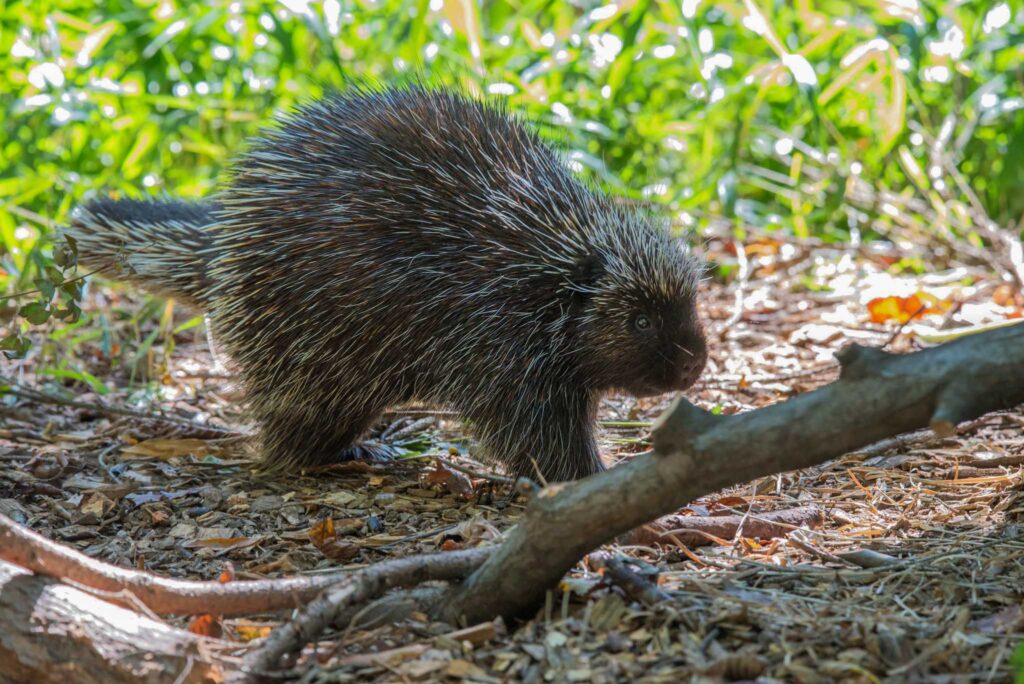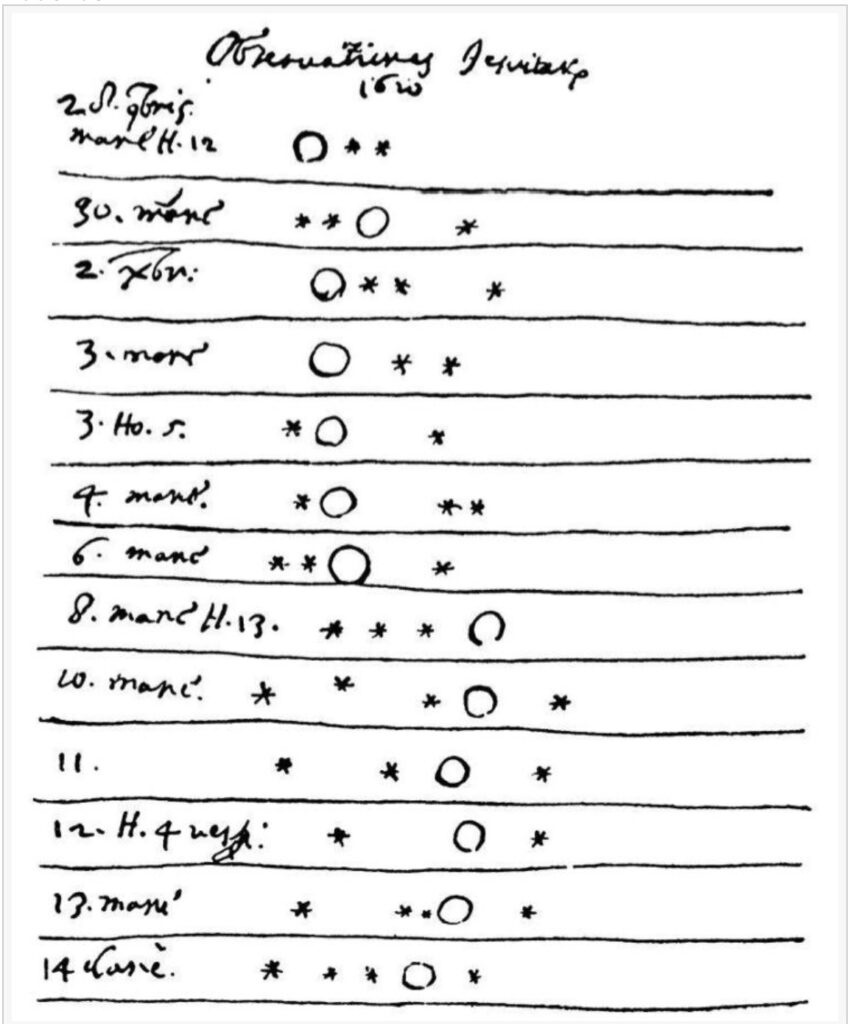Almanac: A Porcupine, By Jove

Porcupines are shy, slow moving, peaceful creatures common in our area but not often seen. Photo: Creative Commons
The moon is surpassingly lovely, but it’s often so bright that it makes stargazing a very washed-out experience. Earlier this week the moon phase was such that it wouldn’t rise until early morning, so I set off for a lovely open field high in the hills of Whately with my binoculars, a sleeping bag, and hopes that the evening’s clouds would dissipate.
It was certainly a dark night. I needed my headlamp to negotiate the trail leading to the field, even though I knew that, once there, I’d need to wait at least 10 minutes for my eyes to dark-adjust after I turned off the lamp. Just as I approached the field I saw, directly ahead of me, a large-ish dark animal. I stopped and it didn’t move. It seemed to be nibbling at the grass. I approached carefully and realized it was a porcupine…and that it was utterly unconcerned to be caught, suddenly, in the glare of an artificial light.
I moved close enough to see that the quills and whiskers around its mouth were white, perhaps with age? It made some very quiet grunting noises as it browsed along the grass of the mown trail. I watched for a minute or two, and then said hello. The sound of my voice seemed to capture its attention more than the light. It picked up its head and gazed at me with its small black eyes. It was sniffing, too, so it must have detected my scent. But it still didn’t seem at all frightened or perturbed.
This is the aplomb that comes from having roughly 32,000 needle-sharp quills covering most of one’s body. Each quill is barbed at the business end and tapered at the base, which makes them easily detached from the porcupine’s body. These features are what make dog/porcupine interactions so often painful and miserable for the poor canine…a muzzle full of quills has to be removed by a vet.
I talked to the porcupine a bit more, assuring it that I meant no harm and commenting on the breezy night. It responded by turning its back on me, nibbling all the while. The quills, I noticed, had become more erect, giving the creature a deceptively fluffy appearance. Since this was clearly a defensive position, I decided to take my leave…not because I was scared…porcupines can’t “throw” their quills and are easily outrun…but out of respect. I was obviously disturbing its dinner.
It was then I noticed that it was limping. Its right front paw was either missing or tucked up so tightly under its belly fur that I couldn’t see it. Losing the function of a leg would be a mortal wound for most four-legged mammals, but no so for a porcupine, which is naturally a very slow-moving, peaceful creature. This fellow seemed quite healthy and fat, so its missing or injured paw seems not to have disabled it significantly. I watched as it slowly waddled off into higher grass.
When I reached my stargazing spot the clouds had thickened, but there were still gaps here and there, and stars blazed clearly in those holes. I settled into a chair facing east. I was hoping to see Jupiter, which reached its closest approach to earth about a week ago and, so, was unusually bright and high in the east. The wind sighed in the nearby trees, but otherwise it was silent. In a gap low on the horizon I saw the three bright stars of Orion’s belt standing up vertically…usually we see Orion after it has risen (and usually later in winter) so those stars have a more belt-like orientation. This was the first time I’ve seen Orion since last spring, as sure a sign of coming snow as any wooly bear caterpillar or leaf-bare tree.
After about 20 minutes, and a couple of teasing half-shrouded appearances, Jupiter suddenly appeared, brilliant in the black hole in the clouds. I grabbed my binocs and was delighted to see all four of the Galilean moons in a straight line, three on one side of the planet, one on the other. They were only tiny pinpricks of light, but I still get a thrill seeing them. My binoculars are about as powerful as the telescope Galileo used when he discovered the moons more than 400 years ago. He kept notes on his observations and was astounded to see that the four little pinpricks moved quickly, from night to night and even over the course of a single night.

He realized these were heavenly bodies orbiting the planet—which violated the then-assumed idea that everything, including the sun, moon, planets, and stars, orbited the earth. It was just one of several pieces of evidence that led him to support the sun-centered model of the solar system that had been put forth earlier by Copernicus.
Jupiter has 69 moons in all at last count, but the rest are tiny objects. Of the four Galilean satellites all but one is larger than our Moon. They are, in order from Jupiter: Io, a volcano riddled world which is constantly resurfacing itself; Europa an icy moon with a good probability of a salty ocean beneath; giant Ganymede, larger than Mercury and also a candidate for a sub-surface ocean; and Callisto a dark moon with bright craters. (For some wonderful images of these moons, check out NASA’s site about the Juno spacecraft that has been orbiting Jupiter for several years now and continues to send back stunning images.)
Within only a few minutes Jupiter again disappeared behind clouds. I stayed a bit longer, enjoying the delights of a quiet night on the surface of this utterly amazing planet of ours. We have sent spacecraft to Mars looking for signs of ancient or current microbial life, and will be sending more spacecraft to other potential homes of microbial life, such as Europa, or Saturn’s moon, Enceladus. Discovering such life would be monumental and delightful. But, at best, we might find single-celled organisms. More likely, perhaps, we’ll find nothing at all, which will make the abundance and phenomenal complexity of the life on Earth all the more precious and wonderous.
Almanac is a regular Indy column of observations, musings, and occasional harangues related to the woods, waters, mountains, and skies of the Pioneer Valley. Please feel free to comment on posts and add your own experiences or observations.

Having Hetty Startup and Stephen Braun as adjacent commentaries in this morning’s Indy is a source of overwhelming gratitude. It reminds me that their always acute and sensitive observations are both supported by a sense of history – although their scales may be very different – and aesthetics. Aesthetic values have a mixed reception these days, but Hetty and Steve remind us that Beauty and Truth are indeed intertwined, as Keats proclaimed two centuries ago.
Dear Michael and Indy readers:
I loved Stephen Braun’s column this month, too. And I often do and should do a better job of registering my appreciation! His column reminds me to pay attention to all the non-human aspects of our town that is something I really treasure. I get a similar kind of gratitude reading Bill Gillen’s posts on his Sunset Farm Facebook page. Warm best, Hetty
Two experiences related to Galileo’s experiments have inspired hair-raised-on-the-back-of-my-neck* awe.
The first (now decades ago) echos Steve’s: watching Jupiter at several times over a week through 7x35mm binoculars mounted — or rather, rigged 😉 — on an old camera tripod, and seeing the little white lights of its major moons permute from side to side.
The second (just over a decade ago) was on my first trip to Pisa to run a summer math institute: while out for an early morning run, rounding a corner I almost shouted out loud (in Latin) “and yet it LEANS!” (Echoing for fun a bit of Galilean apocrypha — “and yet it MOVES” — from after his trial for advocating heliocentrism, but referring to the tower from which Galileo observed — or perhaps popularly demonstrated? — gravitational acceleration at Earth’s surface is independent of the mass of the falling material — his more careful measurements were made using inclined planes….)
Truth and Beauty, indeed!
https://www.ias.edu/idea-tags/truth-and-beauty
*Perhaps that porcupine was experiencing similar awe?! 🙂